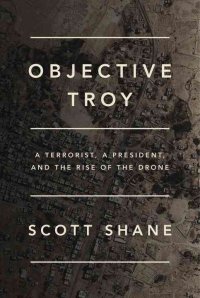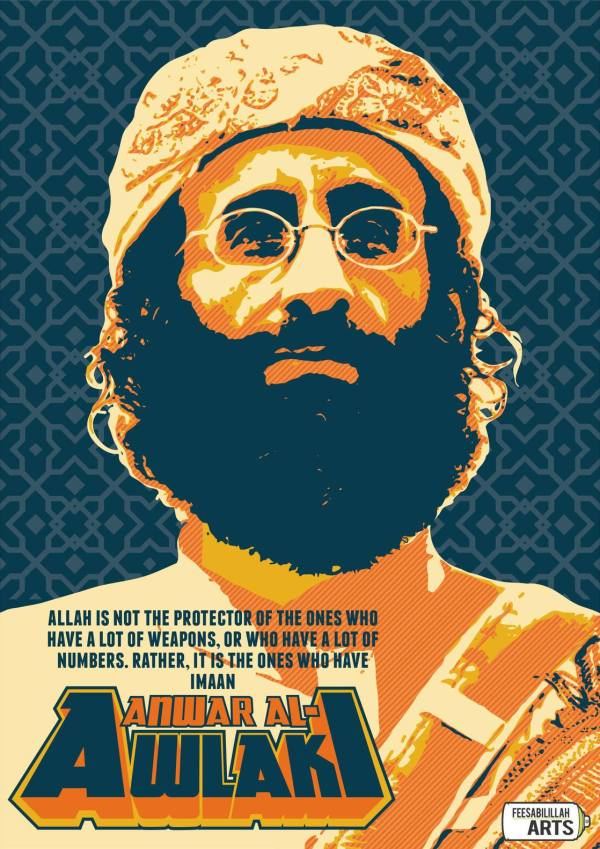Artwork via FEESABILILLAH ARTS
FRESH AIR
Four years ago, an American drone strike in Yemen killed Anwar al-Awlaki, an American-born imam. It was a targeted attack; more than a year earlier, the Obama administration and the CIA had placed Awlaki’s name on a “capture or kill list.” The Obama administration justified the killing of an American citizen by arguing that Awlaki posed an imminent threat to the United States. New York Times reporter Scott Shane tells Fresh Air’s Terry Gross that administration officials felt that Awlaki had “turned the corner from being just a propagandist … for al-Qaida to being an active plotter of violent attacks against the U.S.” Shane is a national security reporter for The  New York Times. In his new book, Operation Troy: A Terrorist, a President, and the Rise of the Drone, he traces Awlaki’s trajectory from a celebrated iman who had called for moderation following the Sept. 11 attacks to a radicalized jihadist. Awlaki’s medium of choice was the Internet, where he published videos and articles on building bombs and mounting attacks. Before his death, he had been linked to Umar Farouk Abdulmutallab, the so-called “underwear bomber” who had attempted to blow up a plane over Detroit on Christmas day in 2009. Some of the biggest and most devastating terrorist plots in the west since Awlaki was killed very much were a reflection of his influence. But, Shane says, “the drone strike that killed [Awlaki] did not silence him.” After his death, Awlaki’s Internet publications were said to have inspired the perpetrators of the Fort Hood shooting, the Boston Marathon bombings and the Charlie Hebdo killings in Paris. “It’s very clear that his status as a martyr has given his message — including his message that it’s the obligation of every Muslim to attack America — even greater authority,” Shane says. “Some of the biggest and most devastating terrorist plots in the west since Awlaki was killed very much were a reflection of his influence.” MORE
New York Times. In his new book, Operation Troy: A Terrorist, a President, and the Rise of the Drone, he traces Awlaki’s trajectory from a celebrated iman who had called for moderation following the Sept. 11 attacks to a radicalized jihadist. Awlaki’s medium of choice was the Internet, where he published videos and articles on building bombs and mounting attacks. Before his death, he had been linked to Umar Farouk Abdulmutallab, the so-called “underwear bomber” who had attempted to blow up a plane over Detroit on Christmas day in 2009. Some of the biggest and most devastating terrorist plots in the west since Awlaki was killed very much were a reflection of his influence. But, Shane says, “the drone strike that killed [Awlaki] did not silence him.” After his death, Awlaki’s Internet publications were said to have inspired the perpetrators of the Fort Hood shooting, the Boston Marathon bombings and the Charlie Hebdo killings in Paris. “It’s very clear that his status as a martyr has given his message — including his message that it’s the obligation of every Muslim to attack America — even greater authority,” Shane says. “Some of the biggest and most devastating terrorist plots in the west since Awlaki was killed very much were a reflection of his influence.” MORE

